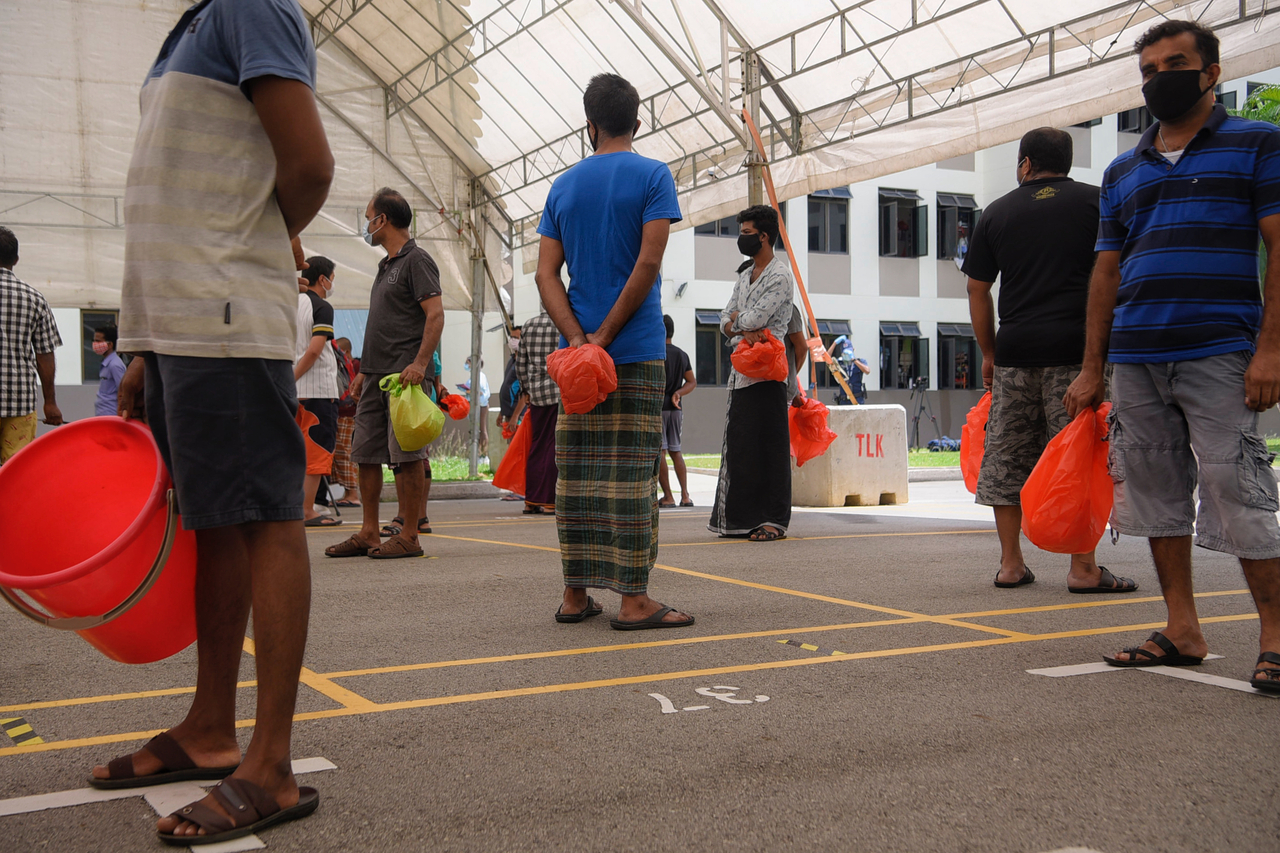Coronavirus: Tight measures at dorms for healthy and recovered migrant workers to prevent new outbreak
Sign up now: Get ST's newsletters delivered to your inbox

The Government outlined its plan for protecting healthy workers as the country gears up for the end of the circuit breaker in June.
ST PHOTO: MARK CHEONG
Follow topic:
SINGAPORE - Blocks in dormitories set aside for healthy migrant workers - either those who have tested negative or have recovered from the coronavirus - will have strict measures in place to try and minimise the chances of a new outbreak.
The measures are designed to control the movement of people in and out of these areas, limit the amount of mixing between workers and making sure any new cases can be identified and isolated quickly.
The Government on Friday (May 15) outlined its plan for protecting healthy workers as the country gears up for the end of the circuit breaker in June. Some 20,000 foreign workers are expected to be discharged from care facilities by the end of the month and be ready to resume work.
Healthy workers will be housed in blocks that are physically segregated from the rest of the premises.
The Manpower Ministry's Permanent Secretary Aubeck Kam noted at a virtual briefing on Friday that 5,400 beds can be expected in the dedicated blocks by next week. The task force he chairs will also aim to recover dorms or blocks in dorms housing up to 60,000 migrant workers in the coming weeks. This is about 20 per cent of the dorm population.
Ms Chew Ee Tien, director of the Foreign Manpower Unit at MOM laid out the measures that will be put in place at these dedicated blocks.
The entry and exit of workers to these blocks will be done in a "carefully regulated way", said Ms Chew, to reduce the risk of Covid-19 re-emerging. Dorm operators will have to put in place a system to track all movement in and out of dorms.
For those allowed to return to work after the circuit breaker ends in June, they must leave only for work and return to the dorms immediately after.
"At some point, if the number of cases in the dorms is brought down to a very low level, it will be possible to consider allowing residents from BRWs to also leave the dorms for non-work reasons," she said, referring to blocks for recovered workers.
Ms Chew said that time spent outside dorms should be kept to a minimum, including not having large gatherings, as everyone will still need to adhere to the prevailing safe distancing measures.
To limit mixing of workers, dorm operators will also be required to set up barriers and mark out routes from dormitory blocks to common areas and entrances. Within each block, residents have to stay within their levels and rooms, and not move freely to other levels. Workers will be allowed to mingle with only those in the same room.
In terms of shared facilities, workers from the same room will be assigned toilets, showers, wash basins, and stoves in communal kitchens for use.
Minimarts, canteens and shops can open, but only for contactless ordering, such as by phone, text, or online ordering and delivery.
When workers go to and return from work, pick-up and drop-off timings must be staggered, said Ms Chew. "This is to prevent crowding at the bus bay, and pick-up and drop-off areas will also have to be designated."
And to ensure any new infections can be quickly detected, dorm residents will be tested regularly and they are to report their temperature, oxygen level and heart rate daily. Medical support will continue to be provided, she said.
The ministry will be working with the Dormitory Association of Singapore, dorm operators, and employers to implement these measures outlined, said Ms Chew.
"In the weeks and months ahead, we must remain vigilant and implement measures so that the workers can work and live in a safe environment."

